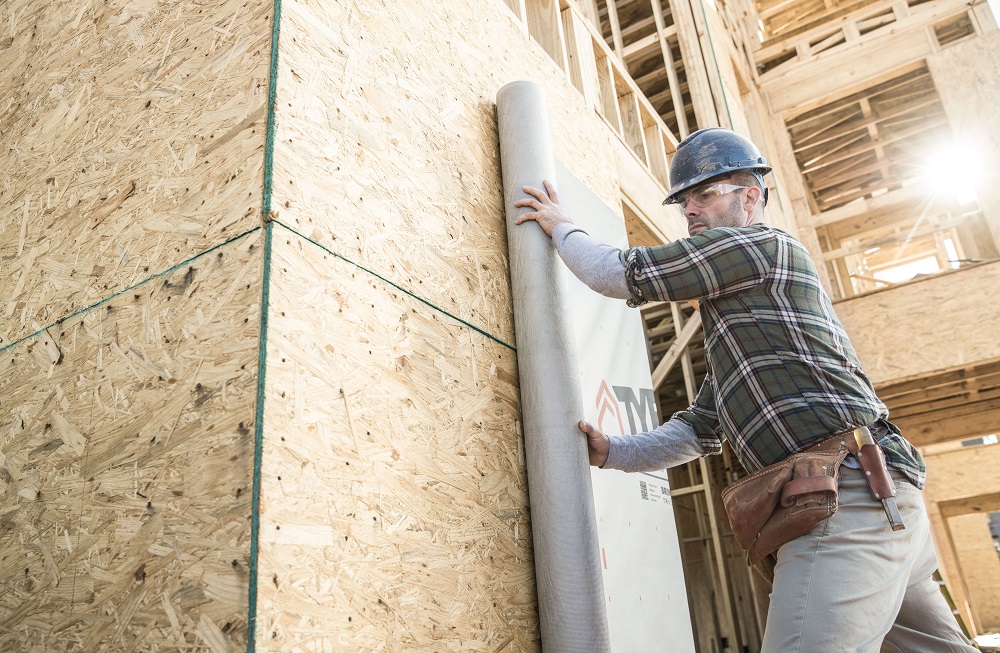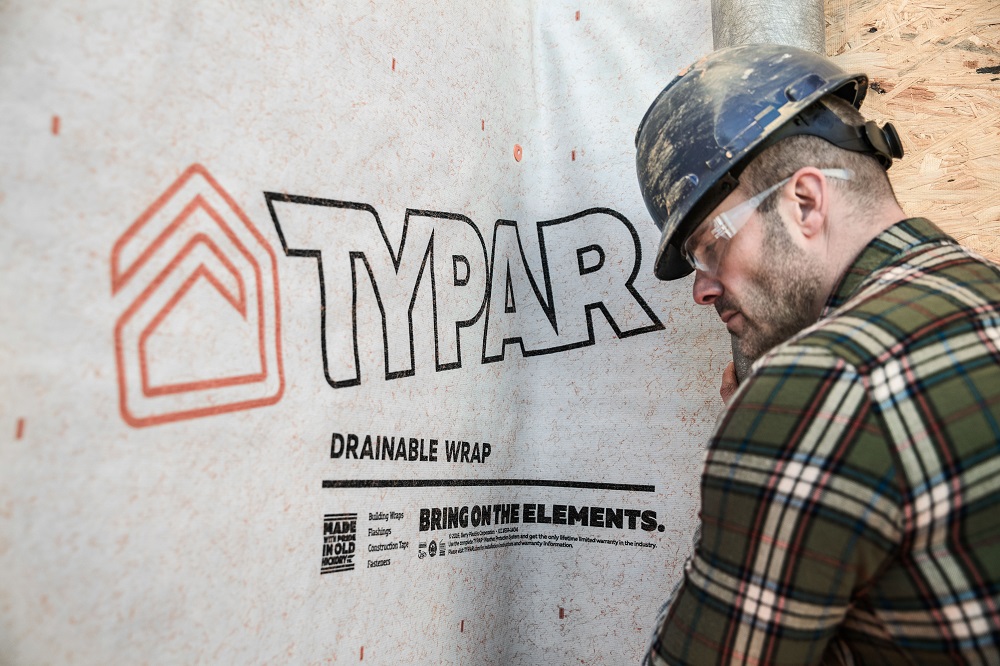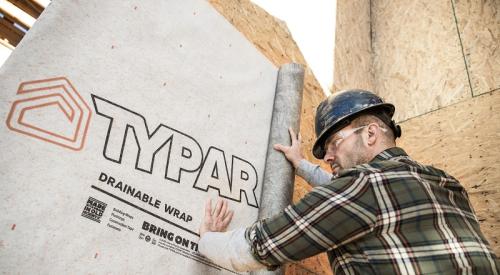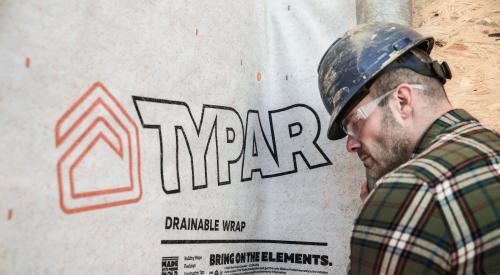Building wraps made of polyethylene or polypropylene fabric have been a popular method of protecting against moisture intrusion since the 1970s because of their durability and ease of installation.
Since building assemblies have gotten tighter, building wraps have taken on a new function helping to remove trapped water from the building enclosure. Their unique functionality enables them to both block moisture from the outside while also allowing walls to “breathe” to prevent vapor buildup. The latest innovations in building wrap technology are taking this moisture removal function one step further to incorporate drainage capabilities as well.
It is important to note the difference between a weather-resistant barrier and a water-resistant barrier, as they have distinct purposes but are often confused with one another. The American Architectural Manufacturers Association (AAMA) defines WRBs as a surface or a wall responsible for preventing air and water infiltration to the building interior. The differentiating factor is a WRB must also prevent air infiltration, while water-resistant barriers are only responsible for stopping water intrusion.
WRBs are commonly specified for commercial buildings or projects where a higher level of performance is desired of the vertical building enclosure and when it is critical to have greater control of interior environmental conditions. Water-resistant barriers, on the other hand, are usually limited to residential and low-rise structures.

IBC & IRC Code Requirements
The 2018 International Building Code (IBC), Section 1402.2, “Weather Protection,” requires exterior walls “provide the building with a weather-resistant exterior wall envelope…designed and constructed in such a manner as to prevent the accumulation of water within the wall assembly by providing a water-resistive barrier behind the exterior veneer…and a means for draining water that enters the assembly to the exterior.”
This water-resistive barrier, as defined by Section 1403.2, “Weather Protection,” comprises at least “one layer of No. 15 asphalt felt, complying with ASTM D226, Standard Specification for Asphalt-Saturated Organic Felt Used in Roofing and Waterproofing, for Type 1 felt or other approved materials … attached to the studs or sheathing.”
In many areas around the country, building codes are driving the need for better moisture management solutions. The International Residential Code (IRC) requires the use of water-resistive barriers, but some states have added even more prescriptive measures to their codes that now include the use of drainage planes, and others are expected to follow.
Oregon, for example, requires that the building envelope shall consist of an exterior veneer, a water-resistive barrier, a minimum 1/8” (3mm) space between the WRB and the exterior veneer, and integrated flashings. The envelope must provide proper integration of flashings with the water-resistive barrier, the space provided, and the exterior veneer. In lieu of providing the 1/8” space between the exterior veneer and the WRB, builders can install the exterior veneer over a water-resistive barrier that is manufactured to enhance drainage and meets the 75% drainage efficiency requirement of ASTM E2273 or other recognized national standards.
Changing building codes and greater adoption of certain cladding materials have caused builders to take a closer look at how moisture is managed in the wall assembly. Advances in building wrap products have added a powerful tool to help achieve these goals.
For more information on weather protection for the building envelope, visit www.typartough.com.












